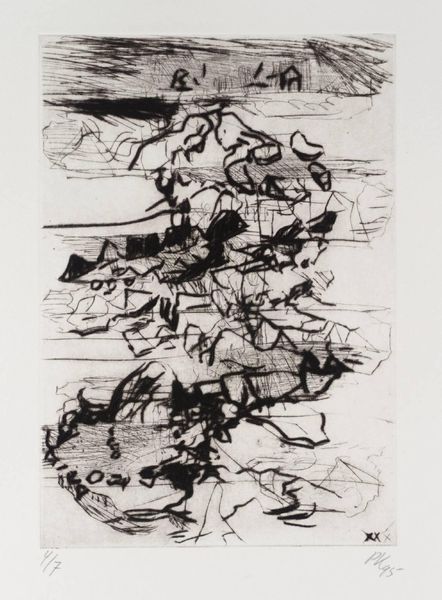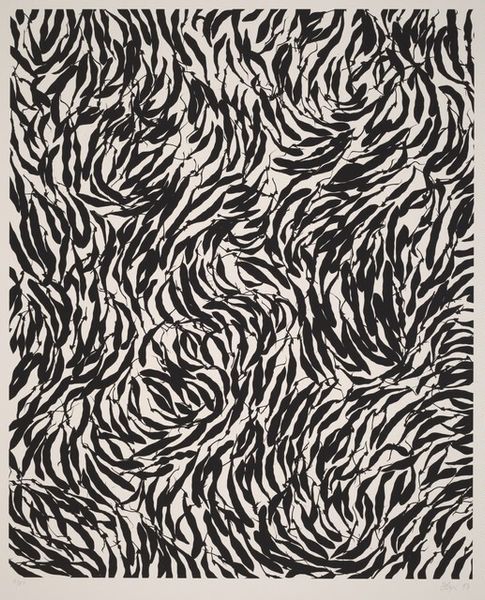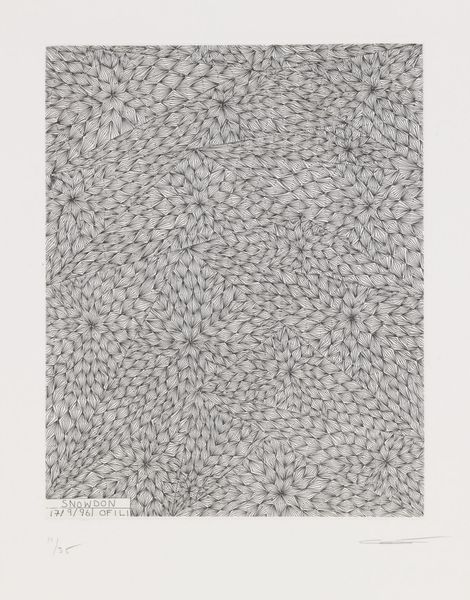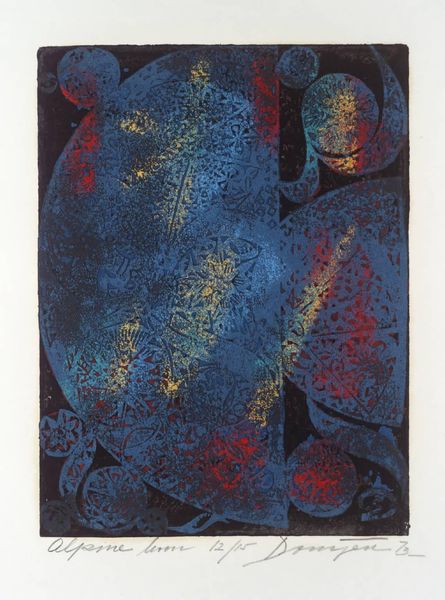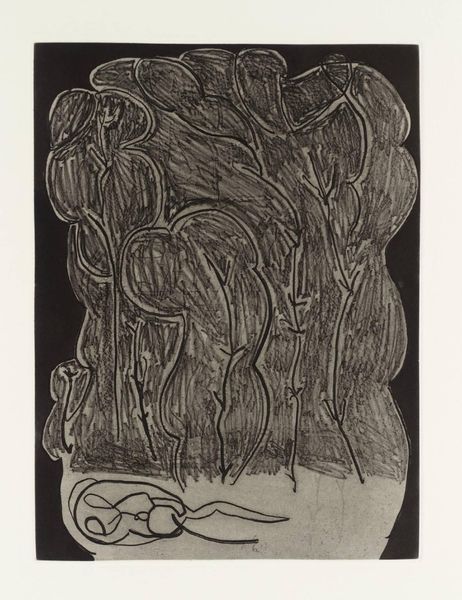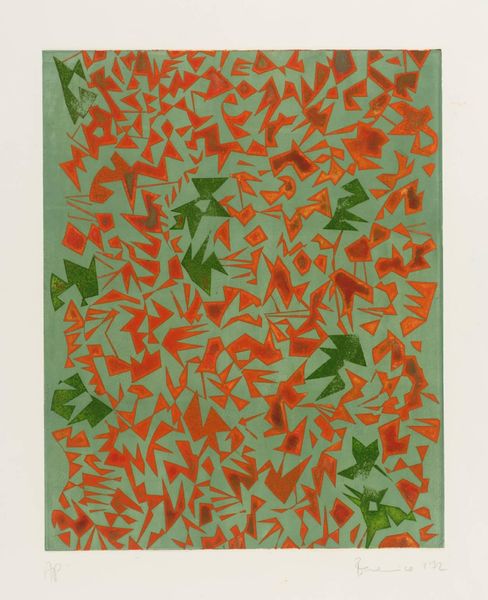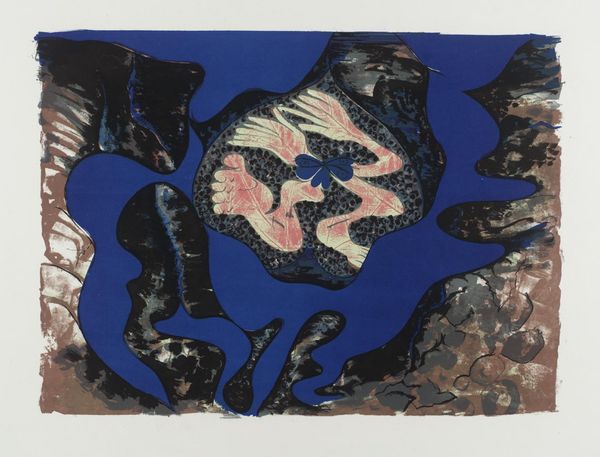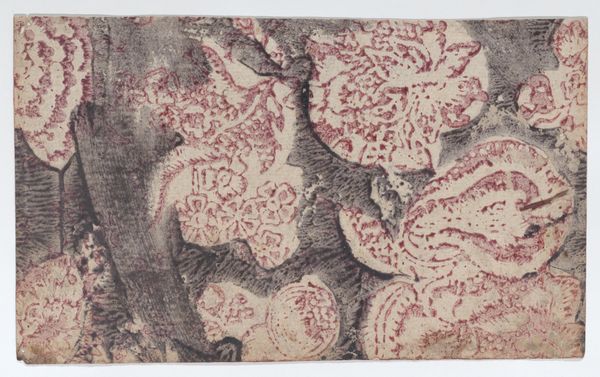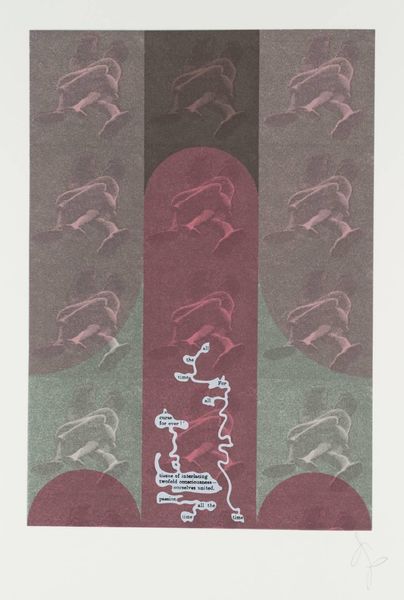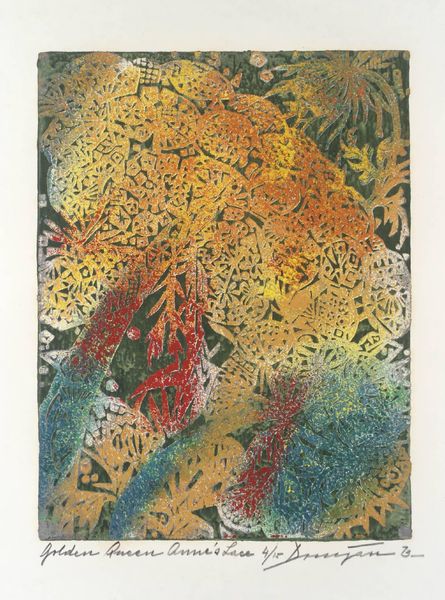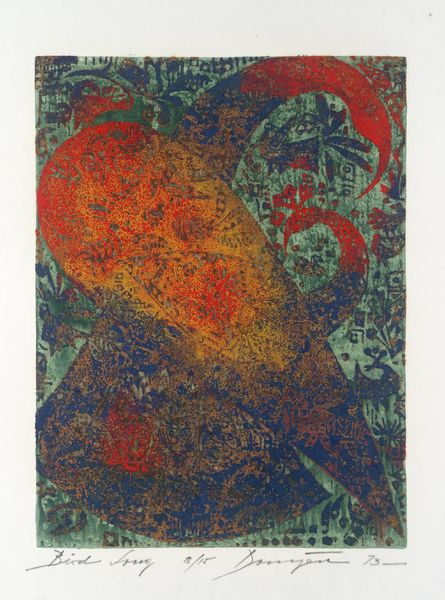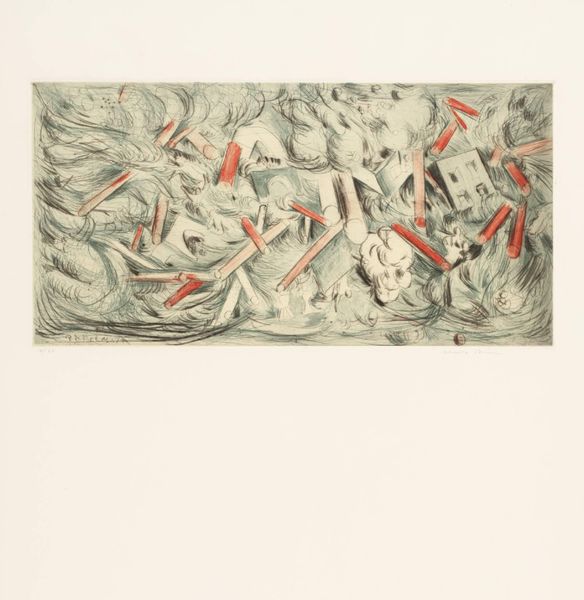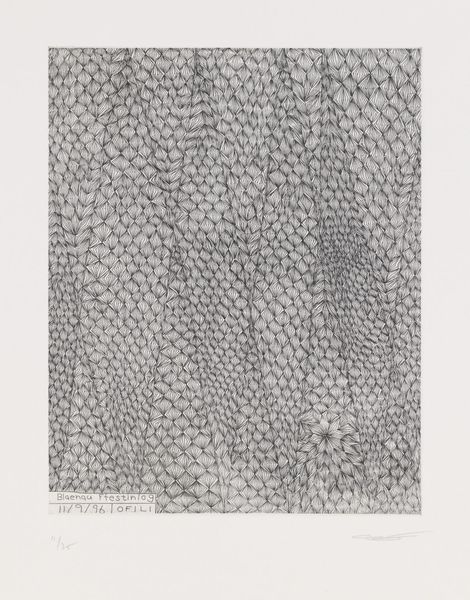
mixed-media, collage, print, textile
#
cubism
#
mixed-media
#
collage
# print
#
textile
#
figuration
#
geometric pattern
#
abstract pattern
#
organic pattern
#
geometric
#
pop-art
Copyright: Enrico Baj,Fair Use
Curator: What a delightfully strange scene. All these figures—are they human, animal, or some fantastical hybrid? Editor: Welcome. We’re standing before Enrico Baj's “Baj Chez Picasso 2,” created in 1969. Baj was known for his satirical, often chaotic, mixed-media works. In this piece, he brings together print, collage, and textile elements. It seems almost overwhelming at first glance, doesn’t it? Curator: Overwhelming, yes, in a fascinating way. The textile patterns disrupt the contours of the figures. It's as if they are dissolving or being reconstructed with fabric itself. Is he commenting on how we piece together identities? Editor: Perhaps. He's certainly playing with artistic languages and their history. This was a period where artists frequently challenged the traditional hierarchy between fine arts and craft, elevating materials often relegated to domestic labor to high art. The patterns, with their handmade quality, emphasize this shift. We must also note Baj's history in the Nuclear Art movement following WWII; is this patterned depiction speaking to societal fragmentation after conflict? Curator: I am drawn to the dynamic, albeit unsettling, composition. The figures seem intertwined, their poses suggesting both struggle and intimacy. And the recurring eye motif—it creates a pervasive sense of unease and surveillance, wouldn't you say? Editor: It certainly gives the impression that one is being watched, critiqued, judged... In terms of production, how was the fabric attached? How did it impact the printmaking process, adding texture and depth beyond traditional methods? Furthermore, I must wonder about sourcing of textiles for this specific composition, and what significance these material considerations have given the theme of this work. Curator: Excellent point. And to push back, I can't help but look at it semiotically: Is there a subversion of cubist representation and mythology? Or a dark take on Pop Art's embrace of consumer culture? It teases you with its vibrancy while unsettling you with its subject matter. Editor: Indeed. By layering these textures and materials, Baj forces us to consider the construction of art objects and to re-evaluate conventional perspectives on art. The choice of a title also draws on the location itself--'chez Picasso'. I appreciate seeing Picasso referenced for the purpose of art production that can be created under particular conditions. Curator: For me, that's also part of what makes "Baj Chez Picasso 2" so captivating. Its blend of familiarity and strangeness forces the viewer to actively engage and question. It invites a second, then a third, look... Editor: And perhaps prompts us to question how art materials shape meaning and culture, revealing hidden values within a familiar yet transformed aesthetic framework.
Comments
No comments
Be the first to comment and join the conversation on the ultimate creative platform.
